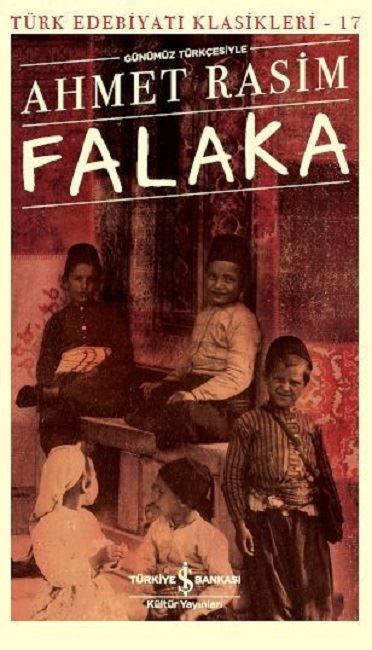
Falaka in Today's Turkish - Classics of Turkish Literature 17
What did it mean to be a child in the Ottoman Empire? How were children raised, how did they start school and what kind of education did they receive? Ahmet Rasim Falaka answers these questions accompanied by his memories from his childhood to his youth. While telling about his education, which he started at the Sofular School in Fatih and completed at Darüşşafaka, he also describes the daily life and childhood of 19th century Istanbul. In Reşat Ekrem Koçu's words, in Ahmet Rasim's writings, Istanbul flows as a sound and colorful film with its landscapes and people. Falaka also contains the most colorful scenes of this movie.
Ahmet Rasim (1865-1932) Ahmet Rasim, who received the title of "City Letterman" with his writings on Istanbul, is one of the most productive and famous figures of Turkish literature and journalism. Born in Istanbul, Ahmet Rasim was raised in very difficult conditions by his mother Nevber Hanım and with the help of his brother-in-law, as his father left home before he was born. He started his education life in neighborhood schools and completed it at Darüşşafaka. He learned French with his own efforts. While working as a civil servant at the Ministry of Post and Telegraph, he also started writing for Ahmet Mithat's newspaper, Tercüman-ı Hakikat. He and Hüseyin Rahmi published the humor magazine called Boğazboğaz. Ahmet Rasim, who also worked as a war correspondent, went to Sofia during the Balkan War and to the Romanian front during the First World War. He entered the Turkish Grand National Assembly as an Istanbul deputy in 1927. He developed music, which he was interested in from a young age, with the music lessons he took from Zekai Dede while he was a student at Darüşşafaka. He composed more than sixty songs, many of which had lyrics of his own. Ahmet Rasim, who continued his career as a writer until the end of his life, produced works in a wide variety of fields, from stories, novels and memoirs to newspaper articles, history and school books. He is one of the writers who has not joined any literary movement, is away from political and literary debates, and aims to inform the public. He became famous and was followed fondly with the articles he wrote in simple and beautiful Turkish, based on observation, reflecting Istanbul life in all its colors, in newspapers such as Ceride-i Havadis, Basiret, Tasvir-i Efkâr, Sabah, İkdam, Akşam, Cumhuriyet. We will continue to include selected works of the author, who knows his hometown, the spirit of the people, the customs and traditions very well, in our Turkish Literature Classics Series.
(From the Promotional Bulletin)
< p>Dough Type:2. Dough
Size: 12.5 x 20.5
First Printing Year: 2019
Print Number:1. Printing
| Publisher | : | İşbank Culture Publications |
| Number of pages | : | 2019 |
| Publication Year | : | Turkish |
| ISBN | : | 9786052958223 |
Üye olmadan sipariş verebildim.
Ayrıca, kargo süreci hakkında da sistem üzerinden güncel olarak bilgilendirildim.
Memnuniyet duydum.
Ayrıca pirtukakurdi olması saygıya deger bir kitap alışveriş
Sitesi.

